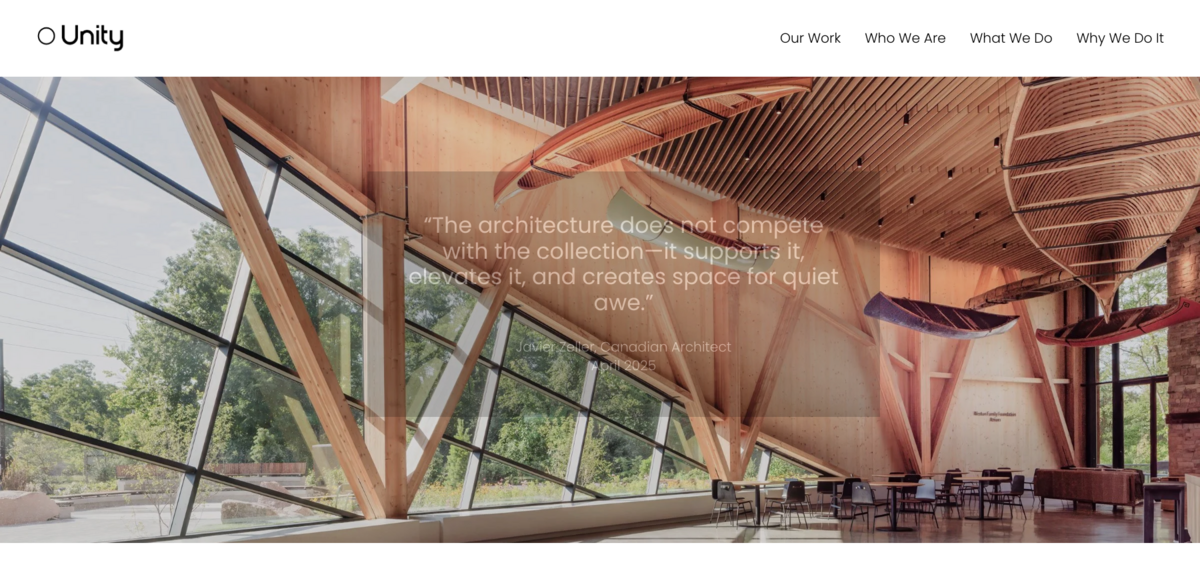Discovering the Canadian Canoe Museum Project
The Canadian Canoe Museum in Peterborough, Ontario, is more than just a building—it’s a new home for the world’s largest collection of paddled watercraft. This purpose-built, mass timber facility is shaped by story, landscape, and collaboration, designed to truly reflect the spirit of the canoe. Visitors get a deeply immersive and reflective experience here, which earned the museum a cover feature in Canadian Architect and a coveted spot on TIME’s list of the World’s Greatest Places of 2025. It’s a space where history, culture, and design come together in a way that feels both respectful and innovative.
Main Benefits and Key Facts of the Project
What makes this project stand out? Let’s break down some of the key figures and facts:
- Home to the world’s largest collection of paddled watercraft
- Located in Peterborough, Ontario
- Purpose-built mass timber facility
- Design inspired by the canoe’s form and connection to water
- Featured on the cover of Canadian Architect magazine
- Recognized by TIME as one of the World’s Greatest Places of 2025
Meet the Design Visionary: Michael Gallant
Michael Gallant, the Design Principal at Unity, led the design of this remarkable new facility. His inspiration? The canoe itself—its shape, its relationship with water, and the stories it carries through time. Michael’s approach is all about balance: reverence for the collection paired with innovation that welcomes community, movement, and discovery. He sees design as a journey of understanding, drawing energy from listening closely to clients and turning their aspirations into meaningful, lasting architecture. It’s this thoughtful process that breathes life into the museum’s design.
Construction Progress: Kitchener Indoor Recreation Complex
Meanwhile, over in Kitchener, steel is rising and mass timber is now in place at the Indoor Recreation Complex. This 189,600 sq. ft. Net-Zero Carbon facility is redefining municipal recreation in Ontario. Delivered through an Integrated Project Delivery methodology, the project brings together regenerative design principles, accessibility, and multi-generational programming all under one roof. With major features like a FIFA-sized soccer pitch and an aquatic centre, the complex is quickly shaping up as a model for future-ready civic infrastructure. It’s a bold step forward in how communities can gather, play, and thrive sustainably.
Why Mass Timber Matters in These Projects
Mass timber is more than just a building material here—it’s a statement. Both the Canadian Canoe Museum and the Kitchener Indoor Recreation Complex showcase how mass timber can be used to create spaces that are not only beautiful but also environmentally responsible. This choice supports sustainability goals by reducing carbon footprints and promoting renewable resources. Plus, the natural warmth and texture of timber add a unique aesthetic that connects visitors to the landscape and stories these buildings embody. It’s architecture that feels alive and rooted in place.
Project Impact on Sustainable Development Goals (SDGs)
- SDG 11: Sustainable Cities and Communities
- SDG 12: Responsible Consumption and Production
- SDG 13: Climate Action
- SDG 15: Life on Land
- SDG 3: Good Health and Well-being
Looking Ahead: The Future of Architecture and Community Spaces
These projects highlight a future where architecture isn’t just about buildings—it’s about creating meaningful experiences that honor culture, environment, and community. The Canadian Canoe Museum and Kitchener Indoor Recreation Complex both push the boundaries of design and planning, showing how thoughtful architecture can inspire connection and discovery. They set a high bar for what’s possible when innovation meets respect for tradition and nature. It’s exciting to see how these spaces will continue to shape their communities for years to come.





















